1. Introduction
The following guide is going to look at the very important debate between Shopify pre-orders vs Kickstarter and choosing which is best for launching a new product.
The Rising Importance of Pre-orders in E-Commerce
Pre-orders are increasingly becoming more important in e-commerce, this is due to several factors; some are listed below;
- Revenue generation – Pre-orders contribute to revenue generation before the product’s official release. Customers typically pay in advance when placing a pre-order, providing businesses with a steady cash flow even before the product is available for shipment.
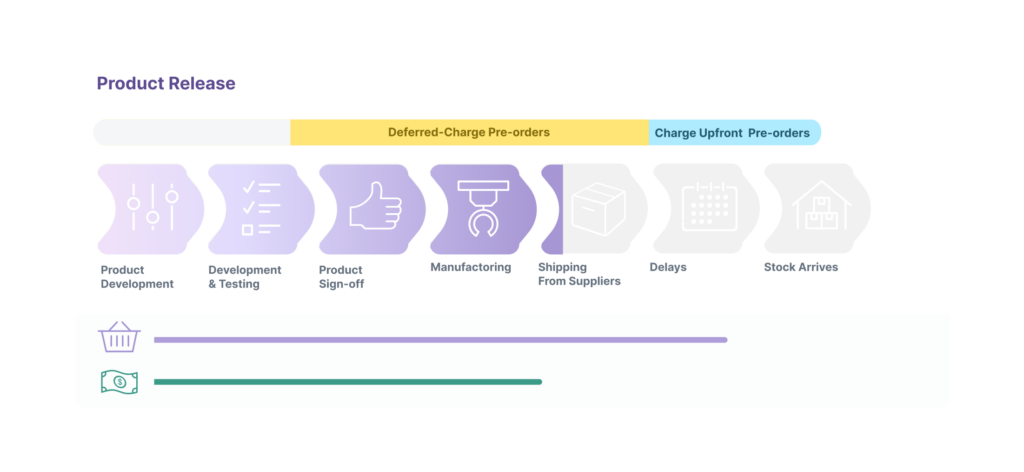
- Production Planning and Inventory Management – Pre-orders help businesses forecast demand and plan production accordingly. By analysing pre-order data, companies can make informed decisions about manufacturing, supply chain management, and inventory allocation. This reduces the risk of overproduction or under-stocking, thus optimizing operational efficiency.

- Anticipation and Exclusivity: Pre-orders allow customers to secure a product before its official release date, creating a sense of anticipation and exclusivity. By placing a pre-order, customers can ensure they will be among the first to receive the item, giving them a feeling of being ahead of the curve.
The power of pre-selling a new product:
Utilising pre-orders for e-commerce can offer lots of benefits, some of these include;
- Marketing and Promotion: Pre-orders can serve as a marketing and promotional tool for companies. They generate buzz and excitement around a product before its release, creating a sense of urgency to secure a reservation. E-commerce platforms can leverage pre-orders to build anticipation through targeted advertising, social media campaigns, and influencer collaborations.
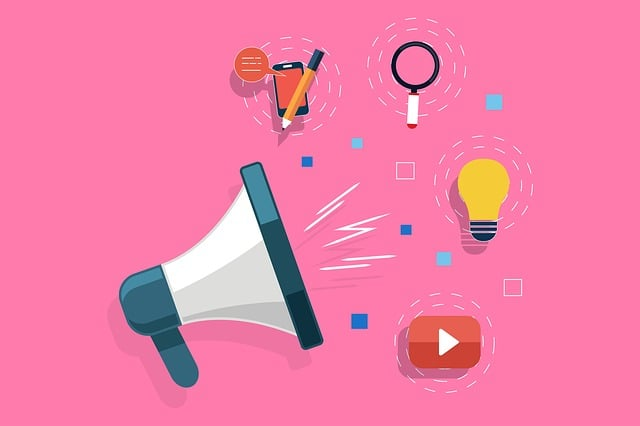
- Customer Engagement and Loyalty: Pre-orders provide an opportunity for e-commerce companies to engage with customers and build loyalty. By allowing customers to secure a product in advance, businesses demonstrate that they value their customers’ preferences and trust. This can lead to increased customer loyalty and repeat purchases in the future.
What to Expect from This Comparison Guide?
This comparison guide will look at the Shopify vs Kickstarter debate, analysing the main differences between using Kickstarter or other crowdfunding platforms vs offering Pre-orders on your e-commerce platform (i.e. Shopify) for releasing a new product.
2. Understanding Shopify and Pre-Orders
The Basics of Shopify Pre-orders:
Pre-selling on Shopify allows you to sell products that are not currently in stock or available for immediate purchase directly from your own website/e-commerce platform. Here are the basic aspects of Shopify pre-orders:
- Availability: With pre-selling, you can list products on your Shopify store even if they are out of stock or not yet released. This enables customers to place orders in advance, securing their purchase for when the product becomes available.
- Product visibility: Pre-order products are displayed on your Shopify store like any other product, with the option to indicate their availability status as “pre-order” or “coming soon.” This helps customers understand that the product is not currently in stock but can be ordered in advance.
- Order placement: Customers can add pre-order items to their cart and proceed to checkout just like regular purchases. The checkout process remains the same, allowing customers to provide their shipping information and select their preferred payment method.
- Payment options: Shopify offers flexibility in terms of payment collection for pre-orders. You can choose to collect full payment, partial payment, or no payment upfront at the time of order placement, depending on your business strategy and product availability.
By leveraging Shopify pre-orders, you can gauge demand for new products, generate customer excitement, and secure sales before the items are physically in stock.
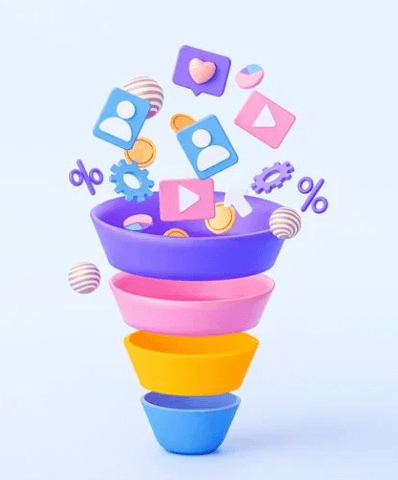
Key Benefits of Using an advanced Shopify Pre-order App like PreProduct:
- PreProduct allows you to charge in a way that makes sense for you: later, upfront, deposit etc
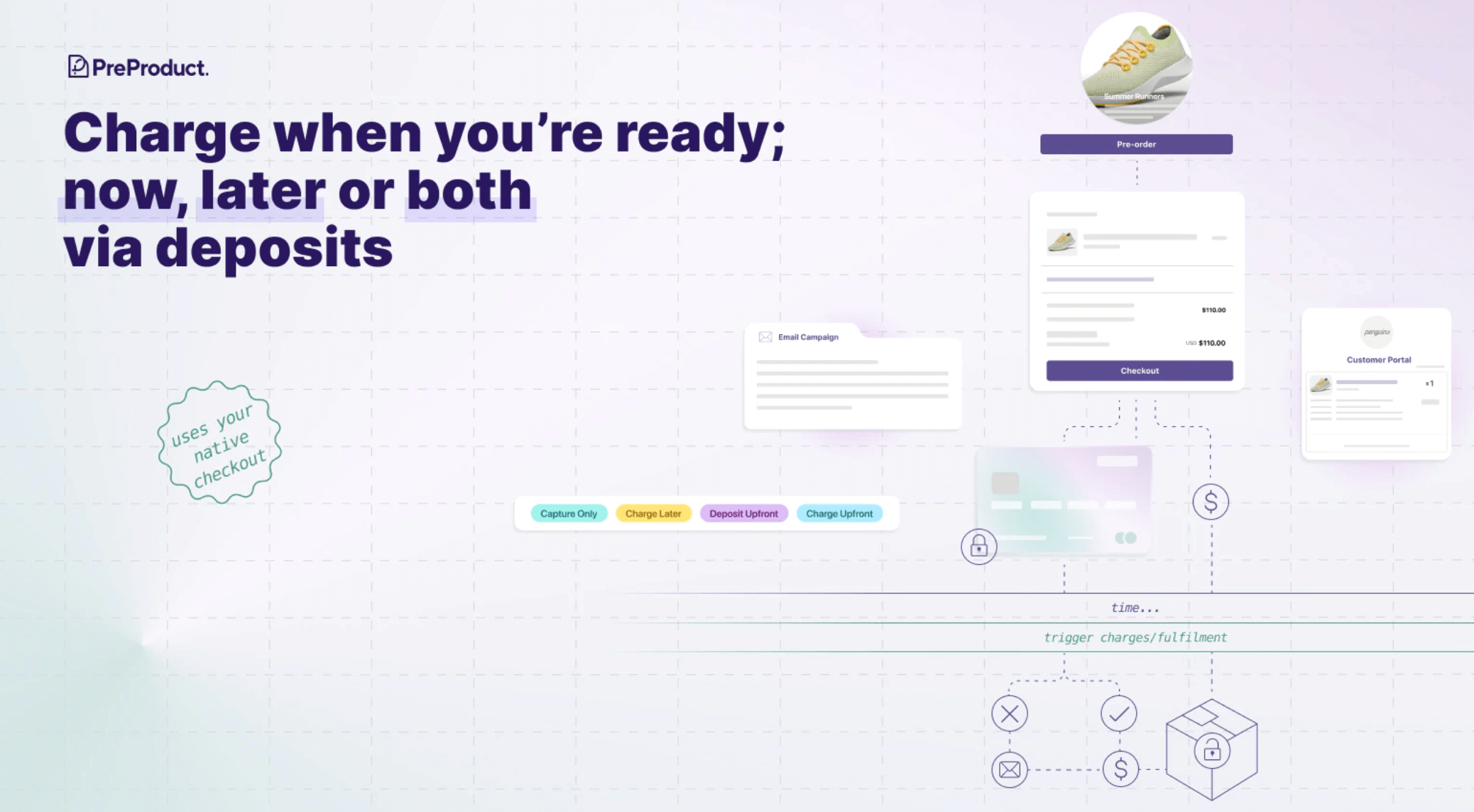
- A Fully customisable set of customer communication tools to keep customers in the loop: product-page messaging, email campaign and customer portal.
- Manage pre-orders in their own system until paid, whilst closely integrating with Shopify so you have the power of both systems.
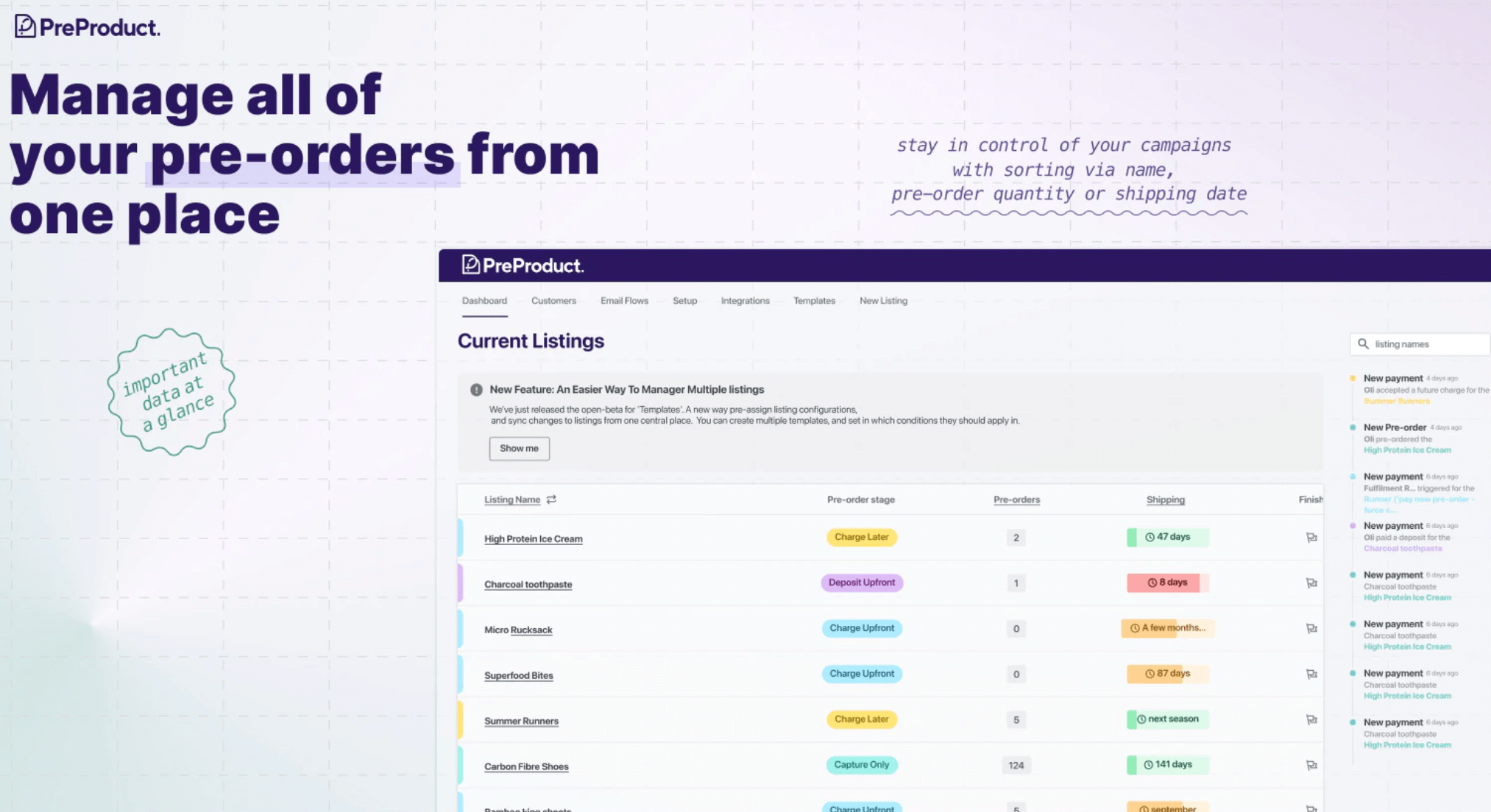
How do Shopify pre-orders work:
In order to utilize pre-orders, you must first install a pre-order app from the Shopify App Store and then go on to handle pre-orders within the Shopify admin interface or within the application itself.
To enable an item for pre-order, you will need to finalize app setup (any snippets/blocks that need adding), then list the Shopify product in question via the app.
Once pre-orders are configured, your customers gain the ability to pre-order (depending on the type of pre-order you set-up) for products before they are ready for shipment.
To access details pertaining to your pre-orders, it is essential to have a pre-order app in use. If a pre-order app is installed, you should also be able to see pre-order specific information in the Product and Orders screens of your Shopify admin, as well as within your specific Pre-order App.
As mentioned above, apps will offer multiple ways to offer pre-orders. The three main pre-order types are:
- Charge upfront pre-orders – this allows you to charge the customer for the pre-order when they place the pre-order
- Charge later pre-orders – the customer goes through the checkout at the time of placing the order, but is not charged, instead they agree to a deferred charge, and Shopify vaults their card details until the store is ready to trigger the payment at a later stage.
- Deposit based pre-orders – allows the store to charge a portion of the transaction up-front, the customers card details are vaulted by Shopify, allowing you to charge the outstanding amount at a later stage.
3. Understanding Kickstarter and Crowdfunding platforms
What is Kickstarter and How Does It Work?
Kickstarter is a crowdfunding platform that allows individuals, groups, and organizations to raise funds for creative projects and ideas. It allows the creator to set a backing goal within a specified timeframe. Video game and board game developers particularly like releasing crowdfunding projects.
People interested in supporting the project, known as backers, can contribute money to help raise money and bring the ideas to life. In return for their support, backers often receive rewards or early access to the project.

The Unique Advantages of Using Kickstarter for Crowdfunding:
Kickstarter offers several unique advantages for crowdfunding campaigns:
- Broad Audience: Kickstarter has a large and diverse community of backers who actively browse and support projects. This provides creators with a built-in audience and increases the visibility of their projects to a wide range of potential supporters.
- All-or-Nothing Funding Model: Kickstarter operates on an all-or-nothing funding model. This means that if a project fails to reach its backing goal within the specified timeframe, no money is collected from backers, and the project does not move forward. This model creates a sense of urgency and encourages backers to rally behind the project to raise money and ensure its success.
- Backer Engagement: Kickstarter emphasises the importance of building a community around projects. Creators can actively engage with their backers through project updates, comments, and rewards. This fosters a sense of involvement and connection, creating a dedicated group of supporters who are invested in the project’s success.
- Pre-Selling and Validation: Kickstarter allows creators to pre-sell their products or offer exclusive rewards to backers. This not only helps generate funds but also serves as a validation of the market demand for the project.
Noteworthy Kickstarter Success Stories
- Exploding Kittens: Exploding Kittens is a card game that became a massive success on Kickstarter in 2015. The campaign broke records by raising over $8 million in just 30 days. The game’s unique and humorous concept, coupled with effective marketing, contributed to its phenomenal success. Exploding Kittens went on to become one of the most successful tabletop games in recent years.
- Oculus VR: Oculus VR, the company behind the popular virtual reality headset Oculus Rift, launched its groundbreaking successful campaign on Kickstarter in 2012. The campaign raised more than $2 million, sparking significant interest in virtual reality technology. Oculus VR was later acquired by Facebook, further propelling the development of virtual reality.

- Pebble: Pebble is a smartwatch company that gained widespread recognition through its Kickstarter campaign in 2012. It raised over $10 million, making it one of the most successful Kickstarter projects at the time. Pebble went on to become a prominent player in the smartwatch industry before being acquired by Fitbit in 2016.
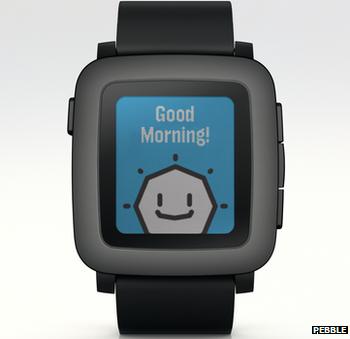
4. Comparison between Shopify Pre-orders and Kickstarter
Project Types and Scope: Shopify Pre-Orders vs Kickstarter
Kickstarter only offers the one format. An All-or-Nothing Funding Model, that is where a backing goal is set to be achieved within a specified timeframe, or backers don’t get charged.
Shopify pre-orders on the other hand allow you to offer different charging options, therefore which allows for flexible funding. In the case of PreProduct: charge upfront pre-orders, charge later pre-orders or deposit based pre-orders.
Funding Mechanism: The Contrast Between Shopify Pre-orders and Kickstarter
Shopify pre-orders gives you the choice as to when you would like to receive revenue. You have the option to charge upfront with charge upfront pre-orders, collect a deposit upfront then charge the outstanding amount at a later time or charge the full amount at a later time with charge later pre-orders.
In contrast with Kickstarter you will only receive revenue if and when the project meets the goal and is successfully funded. There is a 14 calendar day window following your project’s deadline where Kickstarter will collect and process the pledges, and then the funding is then released.
Audience Reach and Marketing: Exploring the Differences
Crowdfunding platforms have a built-in audience of backers, whom are people who generally love the platform and pledge on projects regularly.
However, this audience tends towards certain industries like gaming and early adopter hardware gadgets/fashion. It also wouldn’t be advisable to rely on for your first bunch of sales, as the Kickstarter algorithm and social proof won’t kick in at the beginning.
Shopify on the other hand is your own store/website, which means you’re solely responsible for driving traffic to your website.
Although both Shopify and Ecommerce crowdfunding campaigns in general often heavily rely on paid social media ads for traction and sales, but at least with Shopify you’re driving customers to your own domain.
Because of this, existing brands usually opt for Shopify/their own website over Kickstarter, even if their first product launched via crowdfunding.
Timeframe: Getting Your Idea to Market
Kickstarter allows campaigns to run for 1 to 60 days maximum, and it is generally recommended to use a 30 day time frame.
This means that even if you are very close to your funding goal on the last day of the campaign, you can not extend it, and the project will not go ahead, no backers will be charged.
With Shopify pre-orders you are completely in control of the time frame. You can set the shipping time that suits you, and there is also no financial goal to be met.
Fees: Comparing the Costs
For crowdfunding platforms if your project is successfully funded, there are two main types of fees that will be collected from your project total: A platform for for example Kickstarter’s is a 5% fee, and payment processing fees (between 3% and 5%). If your project isn’t successful, there are no fees.
For a Shopify app, we will look at PreProduct (our Shopify app), fees start from $19.99 per month (plus a usage charge of 0.5% of paid pre-order revenue).
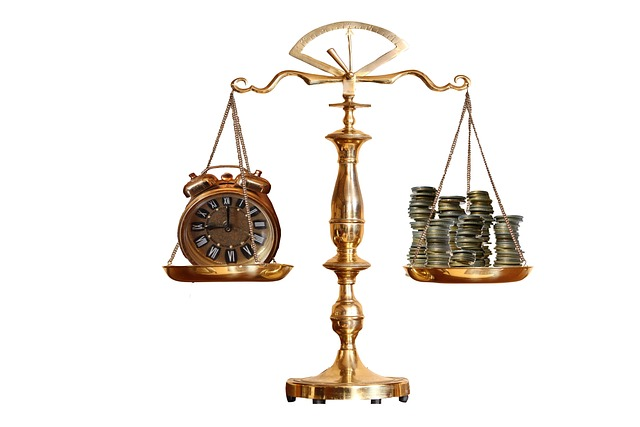
Evaluating the two platforms
Kickstarter is for a short set time period, and this can not be extended, so there is high pressure to ensure you reach your goal in the set time period. You are also driving traffic (via your chosen marketing methods) to another platform rather than your own.
A favourable aspect of Kickstarter is that it has an in-built audience, so without any marketing effort your project can be exposed to the inbuilt Kickstarter audience.
When using a Shopify pre-order app, you are in control of how long you offer pre-orders for, and you can extend or shorten this time period it is completely up to you.
Another benefit of using a pre-order app like PreProduct, is that you are sending all traffic to your website, rather than to another companies website ie Kickstarter.

5. How to Choose: Shopify Pre-Orders or Kickstarter?
Factors to Consider When Choosing Your Platform, Making the Right Choice for Your Business:
Is it just a one hit product you are planning to launch and fulfil, or are you planning to make a business out of the initial product launch?
- If you are at the early stage of your business and just wanting to launch your product with no business plans, Kickstarter will probably meet your needs just fine.
- If you are wanting to make a business out of your product launch, then using Shopify combined with a pre-order app may be more beneficial as you are not confined to Kickstarters time-frames and rules + you can start building up marketing channels to your site
- Are you wanting to launch and pre-sell more than one product?
- You are able to run more than one Kickstarter crowdfunding campaign, but instead running multiple pre-order campaigns on the one site may be easier to manage, customers may also be interested in ordering more than one pre-order product.

What kind of time frame are you wanting to run the campaign for? Do you want to be able to make changes to the time frame?
- A Kickstarter crowdfunding campaign requires you to set a specific timeframe, that is between 1 and 60 days. Once the campaign is created and begins this timeframe can not be edited.
- Pre-order apps allow you to run the pre-order campaign for as short or as long as you like, and often do not require a timeframe to be set when the pre-order is launched.

Do you need an inbuilt audience?
- Kickstarter has a large in-built audience and will also choose some projects to be featured or given the ‘Project We Love’ designation. If you have not undertaken any marketing, and have no existing audience, Kickstarter may be beneficial to get your project in front of a large audience. Although please note, you will need to ‘seed’ the campaign with at least a handful or orders to have a chance of organic sales from the platform.
- Using Shopify and a pre-order app will not provide an in-built audience, but you will be driving all traffic towards your own site.

Fee structure
- Kickstarter collects a 5% fee from the funds collected for creators. Stripe, the payments processor, will also collect a payment processing fee (roughly 3-5%).
- All Shopify pre-order apps vary in the fees they charge. PreProduct our Shopify app, offers 3 different plans each with varying fees. Our cheapest plan is $19.99 per month, and then a 0.5% of paid pre-order revenue.
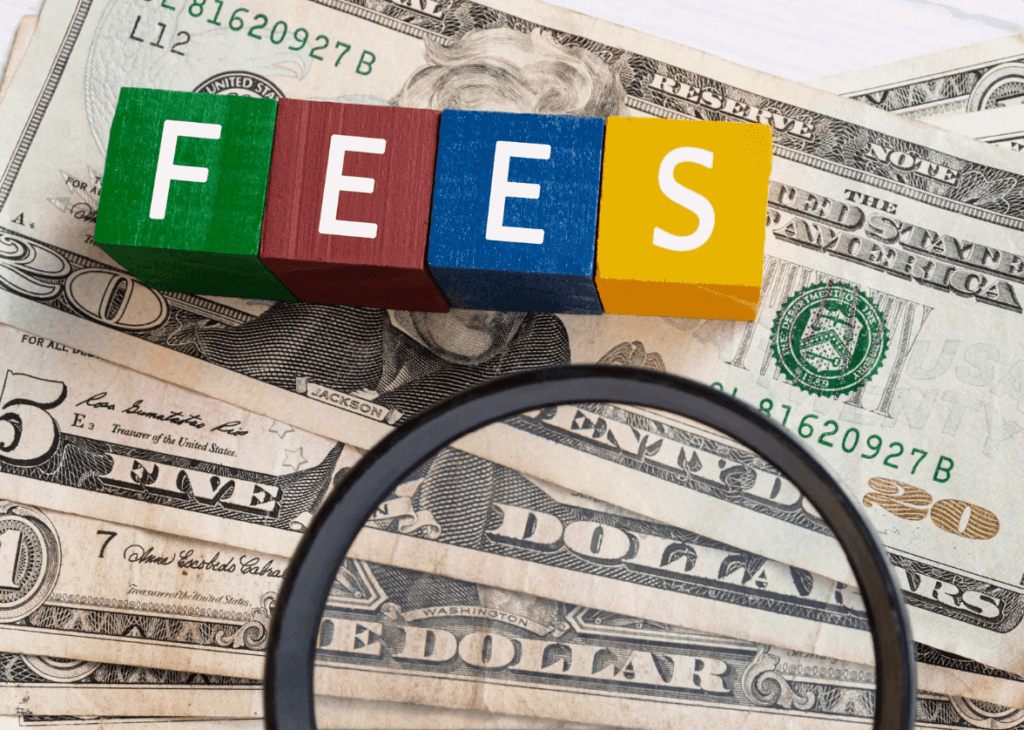
Using Kickstarter first, then transitioning to Shopify + PreProduct
- An option that allows you to benefit from the advantages of both Crowdfunding and Shopify pre-orders, is to first use a Kickstarter crowdfunding campaign to launch your initial product and campaign, then after the campaign finishes, direct traffic to your own site and start running pre-orders.
7. Comparison chart
| Feature | Shopify + PreProduct | Kickstarter |
|---|---|---|
| Host on your domain | ✅ | ❌ |
| Complete control of product page | ✅ | ❌ |
| Inbuilt audience | ❌ | ✅ |
| Campaign can exceed 30 days | ✅ | ❌ |
| Can control when you trigger charge | ✅ | ❌ |
| Can charge a deposit upfront | ✅ | ❌ |
| Can charge full amount upfront | ✅ | ❌ |
| Deferred charge | ✅ | ✅ |
| Can send emails to customers on demand | ✅ | ✅ |
| Mandatory fees | ❌ | ✅ |
| Google analytics tracking | ✅ | ✅ |
| Offer early bird discount | ✅ | ✅ |
| Shows an up to date funds raised bar | ❌ | ✅ |
8. Conclusion
- Reflecting on the Shopify Pre-orders vs Kickstarter Debate
As you can see from this article, there are a lot of points to consider when deciding whether it is best to use either Shopify pre-orders or Kickstarter to launch a new product or variant, and it is important to evaluate and think through all of these points.
Kickstarter has the benefit of an inbuilt audience, which may be important for some new businesses, but Shopify pre-orders gives you full control.
You can choose when to charge customers, when to end or extend a pre-order campaign, and you are also directing all traffic to your own business site.
You also have the option to use a hybrid model, launching your campaign on Kickstarter and then transition to Shopify pre-orders afterwards.
- Future Trends and Developments to Watch in Pre-orders and Crowdfunding
The pre-order and crowdfunding landscape is constantly developing.
One of the interesting developments happening in the pre-order/crowd funding space is the evolution of artificial intelligence and improved data analytics which can help campaign creators optimize their marketing strategy, predict demand, and set more accurate funding goals.

Another trend is the use of social media such as Instagram, Facebook & TikTok. For marketing to direct customers to your campaign, as well as for social proof and reviews, integrating customer reviews and social proof (e.g., user-generated content) into pre-order pages to build trust and credibility among potential buyers.

Hopefully this guide has been helpful and please don’t hesitate to reach out if you have any questions. Happy pre-selling!
